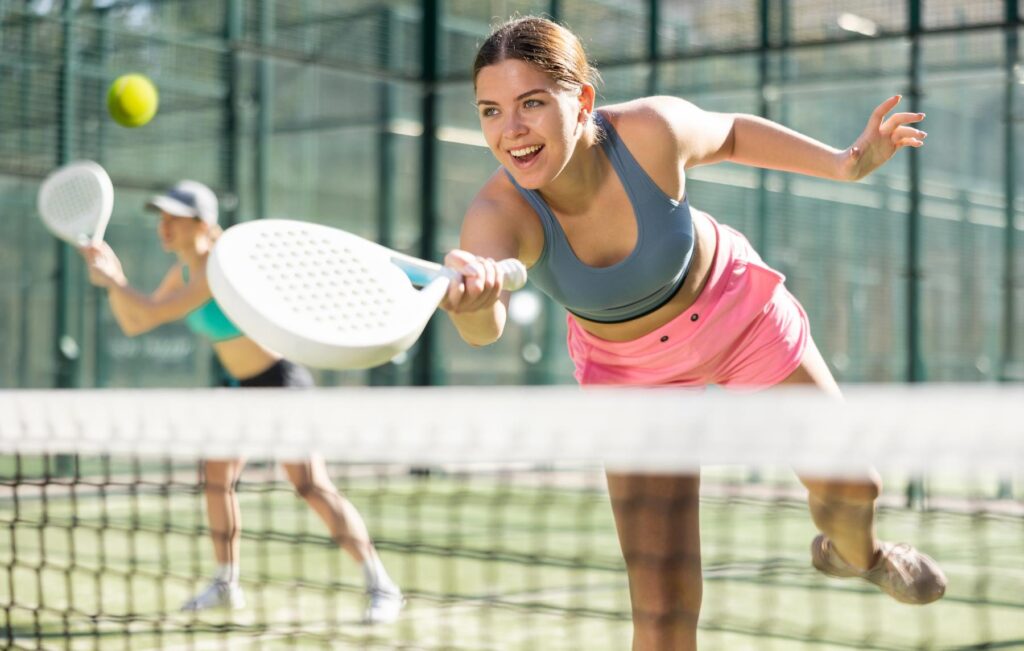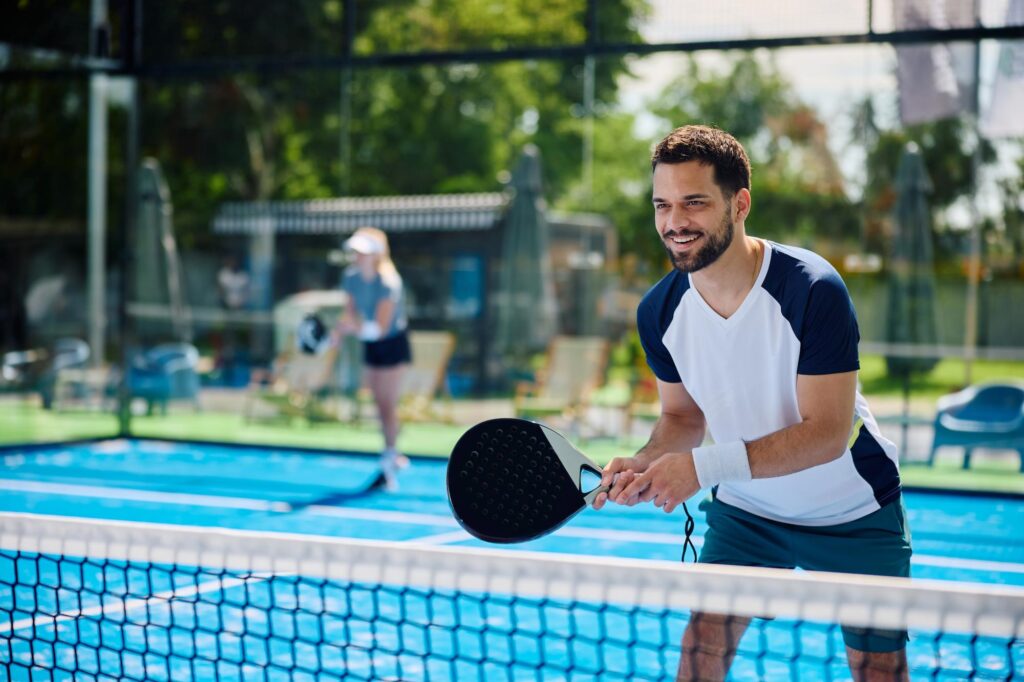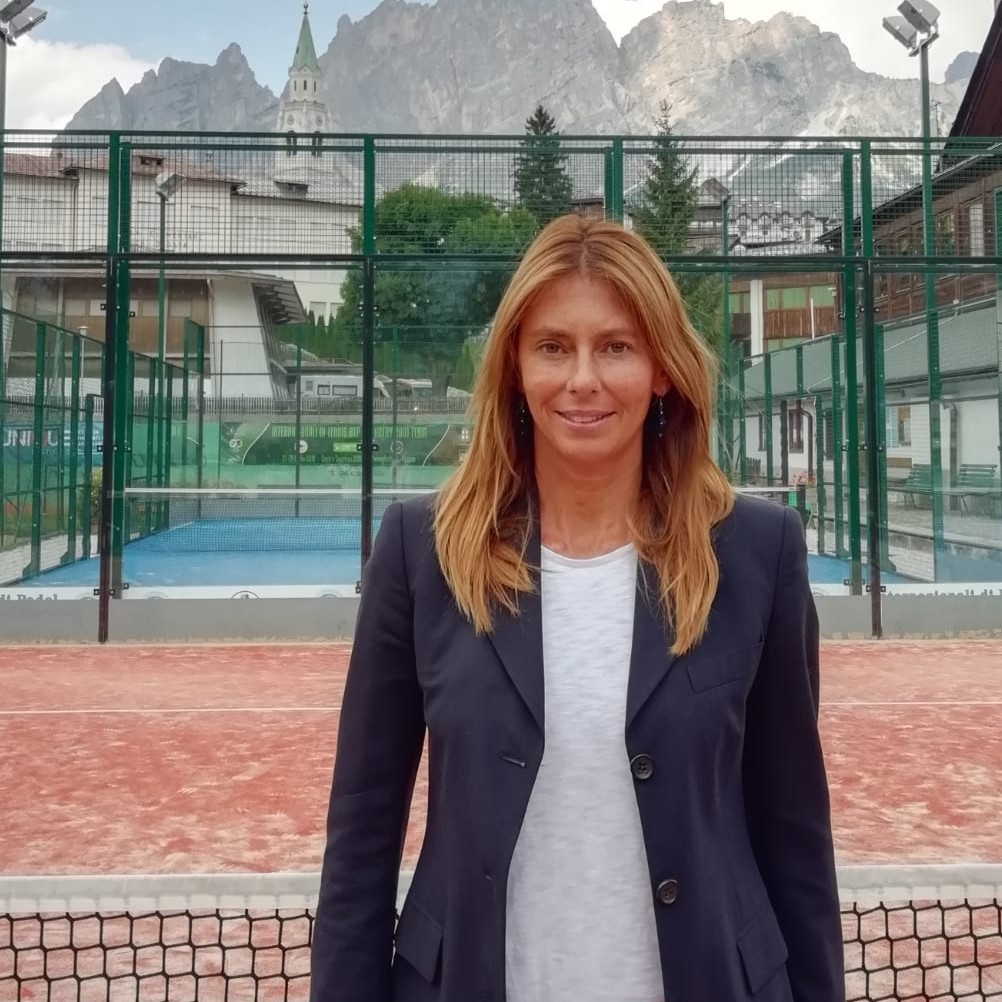PADEL
An emerging sports phenomenon
Sports, like tourism, are constantly evolving. Sports enthusiasts are always looking for new experiences and holidays are perfect to discover and experience new ways of having fun.
Among the many emerging activities, in recent years one in particular has been able to excite and involve an increasing number of sportspeople all over the world: Padel. In this new article we will explore the universe of padel and discover how and why this sport activity has managed to win over millions of new fans in a short time!

History
Padel is a sport that combines elements of tennis and squash, and is played in a smaller field surrounded by glass walls. Invented in Mexico in the 60s, its history is really curious.
In 1969, Mexican patron Enrique Corcuera wanted to build a tennis court within his luxurious residence in Acapulco, but the measurements were off; therefore, he decided to consider the walls as an integral part of the playing field. He began to call this strange sport he just invented “padel”, and he also wrote its first rules, which have remained mostly the same.
Subsequently, he introduced his invention to an acquaintance in Marbella, who was so impressed with it that he decided to bring the game to Spain in 1974. Shortly after, in 1975, millionaire Julio Menditengui introduced the new sport to the people of his country,Argentina: here too the success was extraordinary and, in a short time Padel was played by a few million of people in thousands of fields,becoming one of the most practiced sports in theentire nation.
The success of padel is certainly due to its dynamic nature, but also to its easy rules and social aspect: all these elements make the game perfect for those seeking a fun and accessible sport challenge. In Italy it began to spread in the early 2000s, but its popularity increased exponentially during the pandemic period, since, being a dynamic andoutdoor sport, many decided to try it as an alternative to indoor sports.

The Rules
Its ability to adapt to different levels of skill and the friendly atmosphere it creates, make Padel is the perfect sport to try while on holiday. But how is it played? A padel court is similar to a tennis court, but smaller: it is 10 meters wide and 20 meters long. It is enclosed by 4 walls that are three meters high and transparent, while the rackets are about 45 cm long, 25 wide and 3.5 thick. Unlike tennis rackets, they do not have ropes but the so-called “full plate“, very often equipped with holes to make them aerodynamic. The balls, on the other hand, are similar to tennis balls but lighter and inflated with less pressure. The net is also slightly lower, at 92 centimetres at the ends and 88 in the centre. The ball must be served from below and hit with the racket above the pelvis, after it’s made to bounce. If the ball bounces after being thrown, it can touch the walls and be hit; the important thing is that it is not thrown directly at the walls without first bouncing on the floor. The ball can be hit on the fly, except for the return of serve. Padel is mainly played in pairs and only in the most important events is it played in singles, that is, one versus one. The point is scored when the opponents allow the ball to bounce twice, if it’s thrown directly against the walls or if it ends up in the net. The score is calculated like in tennis: 15 points for one, 30 for two and 40 for three. In the case of a 40-40 tie, one of the pairs must score two points more than the opponent to win the game. The victory of a set is attributed to those who win 6 games first, unless the score is 5-5 or 6-6: in the first scenario, it is necessary to obtain a gap of two games to win 7-5; in the second case, the match continues with the tie-break, where each point is worth one and the victory is assigned to those who reach at least 7 points with a gap of at least 2 points from the opponent. Who wins two sets, wins the game.
Precisely because of its simplicity, Padel involves and excites many people who, after trying it, can no longer do without it. It is a fun and accessible sport that is perfect to practice even in summer, to keep fit while on vacation, thanks to exciting challenges it poses! Have you ever tried Padel? The Sport of the moment awaits you!
Sports holidays at Villaggio San Francesco
The San Francesco Village is the ideal destination for your sports holiday just a stone’s throw from Venice!
Immersed in the nature of Caorle, overlooking the Adriatic Sea with its award-winning Blue Flag beach, it is renowned for being one of the best sports resorts in Italy, where adults, children and families can choose every day from many sports activities.
An exclusive new feature of the 5-star resort are the 2 brand new padel courts, to challenge friends and family and have fun all together. Open daily from 7am to 1pm and from 3pm to midnight, they are perfect for exciting 2 vs 2 or 1 vs 1 matches!
In addition, thanks to free group lessons or private individual lessons, young and old alike will be able to improve their skills in this new and engaging sport!
What if you don’t have the equipment? Don’t worry, you can rent everything you need at the “Al Volo” snack bar, located at the entrance to the sports fields!
Are you ready to discover Padel at the San Francesco Village? Your sporting holiday awaits!

The author:
Marta Conean is a former Italian professional tennis player originally from Treviso, who was part of the women’s national tennis team 6 times. She told us that she fell in love with this
sport 9 years ago:
“I played it for the first time in Rome, and since then I have not been able to stop. It is a simple sport, which fascinates for its ability to involve and excite people. I immediately knew it would be a great success.“
In 2018, FIT asked her to contribute to the development and spreading of this new discipline in the Veneto region and today she holds the role of FITP Regional Councillor for Padel. sports centre of the city of Treviso. In addition, Marta directs the “0422” Padel Club inside the Tennis Park
of Villorba, the historic sports centre of the city of Treviso.
